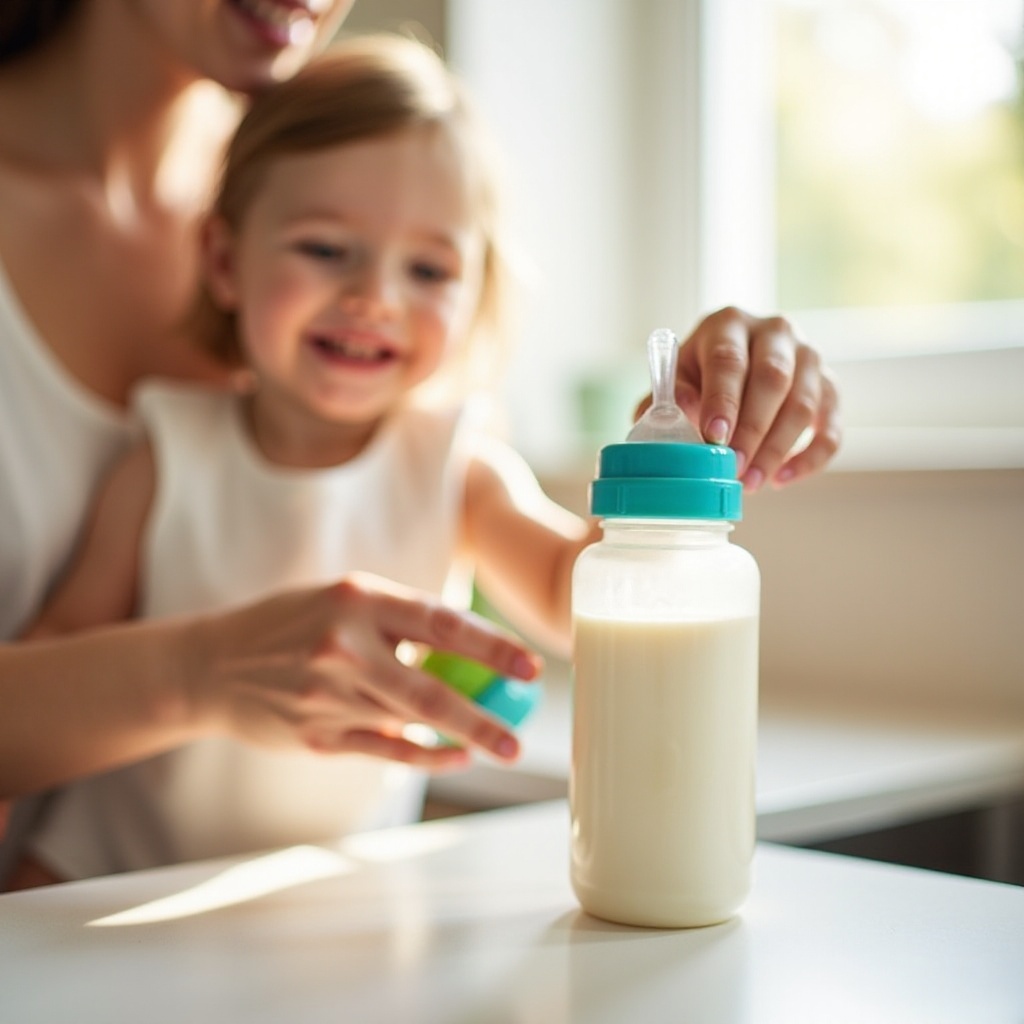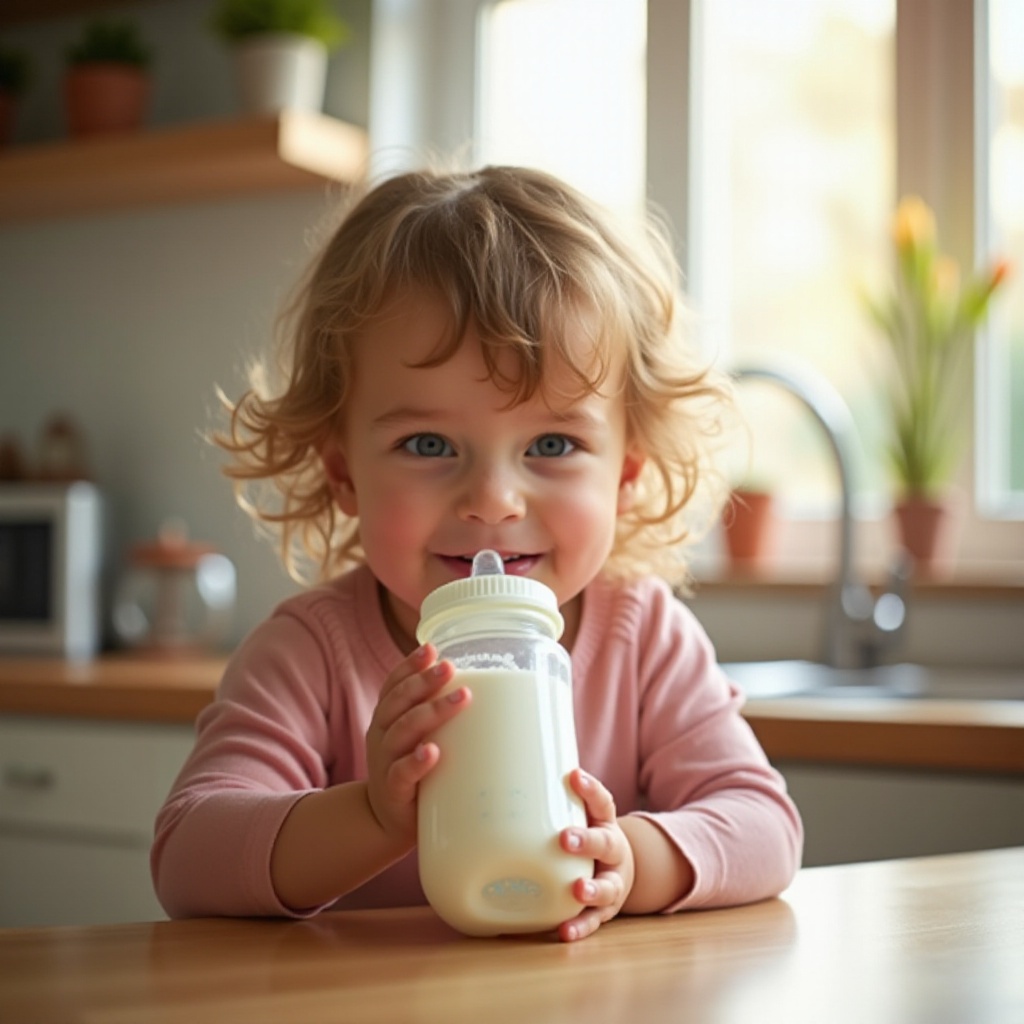Introduction
Choosing the right milk bottle for your 3-year-old can be an overwhelming task. With numerous options available, each promising to be the best for your child’s health and comfort, knowing what to look for can be confusing. This comprehensive guide aims to simplify your decision-making process by providing you with all the necessary information about milk bottles for 3-year-olds. From understanding their importance to the types available and key features to seek, to top recommendations, we’ve got you covered.

Why Milk Bottles Are Still Important at Age 3
At the age of three, children continue to grow and develop rapidly. Proper nutrition during this stage is crucial to support their development. While many parents transition their children to cups, milk bottles still hold value for several reasons.
Firstly, milk bottles provide a safe and secure way for children to consume milk. Their familiarity can be comforting for children, making them more inclined to drink sufficient amounts. Secondly, milk is a vital source of calcium and vitamin D, essential for bone growth and overall health. With milk bottles, children receive their essential nutrients without spills or messes.
Moreover, during nighttime, a milk bottle can be a soothing bedtime routine, helping children relax and sleep better. As you can see, milk bottles play a multifaceted role in ensuring that a 3-year-old receives adequate nutrition and comfort.

Types of Milk Bottles for 3-Year-Olds
Understanding the types of milk bottles available for 3-year-olds is crucial for making an informed choice. Here are the main types you will encounter:
- Standard Bottles: These are the classic milk bottles most parents are familiar with. They come in various materials such as plastic, glass, and stainless steel.
- Transition Bottles: Designed for older infants and toddlers transitioning from bottles to cups, these feature a spout or a straw instead of a traditional nipple.
- Sippy Cups: While technically not bottles, sippy cups are a popular choice for 3-year-olds and come with spill-proof designs and easy-to-hold handles.
- Trainer Cups: Similar to sippy cups but with designs that promote proper drinking techniques, these help in transitioning from bottles to regular cups.
Each type has its advantages and disadvantages, so understanding your child’s specific needs and preferences will help steer your decision.
Key Features to Look For in Milk Bottles
Not all milk bottles are created equal. Here are the essential features to consider:
- Material Safety: Ensure the bottle is BPA-free and made from food-grade materials. Stainless steel and glass are good options for parents concerned about plastic.
- Ease of Cleaning: Choose bottles with fewer parts and wide necks for easy cleaning. Dishwasher-safe bottles are a plus.
- Anti-Colic Design: Bottles designed to minimize air intake can reduce colic symptoms, making feeding more comfortable for your child.
- Durability: Durable bottles withstand drops and wear-and-tear, making them more economical over time.
- Comfort: Soft, natural-feel nipples help transition from breastfeeding. Ergonomically designed bottles are easier for your child to hold.
Understanding these key features will ensure you choose a bottle that best suits your child’s needs.
Top Recommended Milk Bottles for 3-Year-Olds
Here are our top recommended milk bottles based on safety, usability, and comfort:
- Philips Avent Natural Baby Bottle:
- Material: BPA-free plastic.
- Features: Wide breast-shaped nipple, anti-colic valve.
- Pros: Easy to clean, promotes natural latch.
- Dr. Brown’s Original Bottle:
- Material: BPA-free plastic.
- Features: Internal vent system reduces colic and gas.
- Pros: Clinically proven to reduce colic, easy to hold.
- Pura Kiki Stainless Steel Bottle:
- Material: Stainless steel with silicone components.
- Features: BPA-free, eco-friendly, adaptable to various lids.
- Pros: Durable, safe, versatile.
- NUK Learner Cup:
- Material: BPA-free plastic.
- Features: Spill-proof spout, easy-grip handles.
- Pros: Great for transitioning, dishwasher-safe.
- Tommee Tippee Advanced Anti-Colic Bottle:
- Material: BPA-free plastic.
- Features: Anti-colic system, heat sensing strip.
- Pros: Reduces colic symptoms, comfortable for feeding.
These recommendations offer a range of options tailored to different needs and preferences, making it easier for you to choose the best milk bottle for your 3-year-old.
Conclusion
Selecting the right milk bottle for your 3-year-old involves understanding the value they bring, the types available, and the key features to look for. With the information and recommendations provided in this guide, you are now well-equipped to make an informed decision that aligns with your child’s needs for comfort, safety, and nutrition.
Frequently Asked Questions
What type of milk is best for 3-year-olds?
Whole milk is generally recommended for 3-year-olds as it provides essential fats and nutrients. However, consult your pediatrician for personalized advice based on your child’s health needs.
How often should you replace milk bottles?
It’s advisable to replace milk bottles every 3-6 months, or sooner if you notice any signs of wear or damage. Regularly inspect bottles for cracks or degraded parts.
Are there any safety tips for using milk bottles?
To ensure safety, always keep milk bottles clean and sterilized. Avoid using damaged or worn-out bottles. Additionally, monitor your child while feeding to prevent choking hazards.
